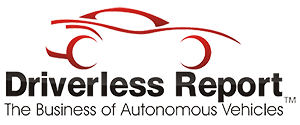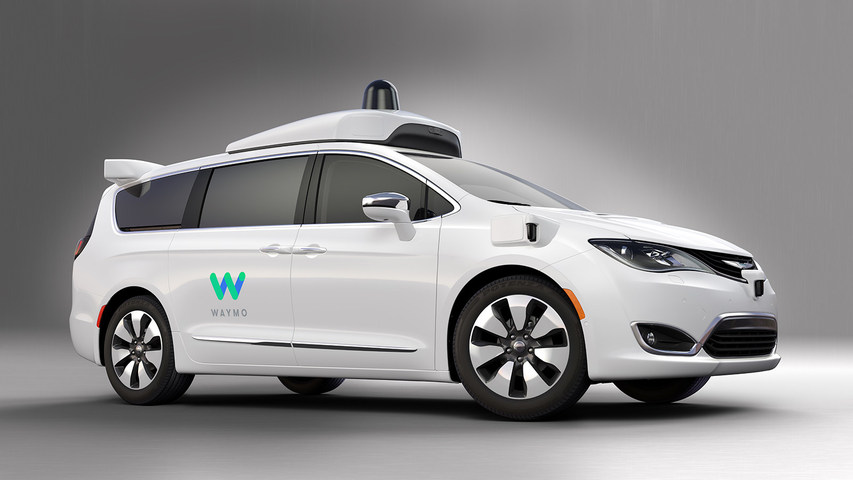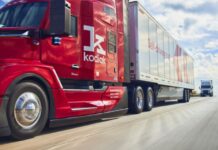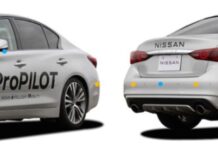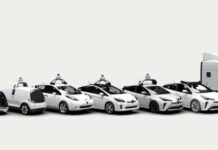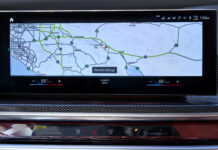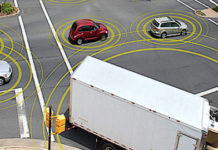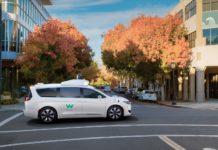PHOENIX – Three weeks into his new job as Arizona’s governor, Doug Ducey made a move that won over Silicon Valley and paved the way for his state to become a driverless car utopia.
It was January 2015 and the Phoenix area was about to host the Super Bowl. Mr. Ducey learned that a local regulator was planning a sting on Lyft and Uber drivers to shut down the ride-hailing services for operating illegally. Mr. Ducey, a Republican who was the former chief executive of the ice cream chain Cold Stone Creamery, was furious.
“It was the exact opposite message we should have been sending,” Mr. Ducey said in an interview. “We needed our message to Uber, Lyft and other entrepreneurs in Silicon Valley to be that Arizona was open to new ideas.” If the state had a slogan, he added, it would include the words “open for business.”
Mr. Ducey fired the regulator who hatched the idea of going after ride-hailing drivers and shut down the entire agency, the Department of Weights and Measures. By April 2015, Arizona had legalized ride-sharing.
Arizona has since built upon the governor’s action to become a favored partner for the tech industry, turning itself into a live laboratory for self-driving vehicles. Over the past two years, Arizona deliberately cultivated a rules-free environment for driverless cars, unlike dozens of other states that have enacted autonomous vehicle regulations over safety, taxes and insurance. In fact, many people are already having to consider this factor when it comes to finding new cover for their cars, be it from Insurance Quotes or other insurance groups.
Arizona took its anything-goes approach while federal regulators delayed formulating an overarching set of self-driving car standards, leaving a gap for states. The federal government is only now poised to create its first law for autonomous vehicles; the law, which echoes Arizona’s stance, would let hundreds of thousands of them be deployed within a few years and would restrict states from putting up hurdles for the industry.
“We are in the Wild West phase of autonomous vehicles, where companies are looking for the state with the least amount of sheriffing going on,” said Henry Jasny, senior vice president at Advocates for Highway and Auto Safety, a nonprofit based in Washington.
The payoff for Arizona has been a tech boom, with dozens of autonomous vehicle companies flocking here to set up operations. Every day, Waymo, the driverless car business owned by Google’s corporate parent Alphabet, as well as Uber, Lyft, General Motors and Intel now deploy hundreds of cars that drive themselves on the streets of Phoenix, a sprawling metropolis of 1.4 million people.
Some companies have pushed boundaries by conducting first-of-its-kind experiments in the state. Waymo announced this past week that it had begun testing self-driving cars in the Phoenix suburb of Chandler without an employee at the wheel to take over in an emergency. Until then, all driverless car trials had a human driver in the front seat, just in case. Uber said it was also exploring similar tests, with employees moving to the back seat.
But Arizona’s permissiveness has drawn criticism from safety advocates who said the companies have too much freedom to conduct their trials on public roads. They said car companies and state officials have not solved questions about the privacy of passengers, the prevention of cyberattacks on autonomous cars, and how to insure vehicles that don’t have a driver.
“It’s open season on other Arizona drivers and pedestrians,” said Rosemary Shahan, president of Consumers for Auto Reliability and Safety, a nonprofit that has pushed for stronger state and federal rules. “There is a complete and utter vacuum on safety.”
Arizona officials said the public is essentially protected by basic rules that require a licensed driver somewhere in the driverless car. They added that they planned to take a back seat to the experts when it comes to rule-making. The state insurance regulator, for example, said he would wait for the insurance industry to guide regulators on liability policies for driverless cars, amid questions about who is responsible in a crash if the car isn’t driven by a human.
“We shouldn’t be getting in the way by prescribing regulations when we really don’t know how the equipment will perform,” said John Halikowski, director of the Arizona Department of Transportation.
The state’s hands-off approach has already been tested. In March, Arizona experienced its first crash involving a driverless car, when a human-driven vehicle collided with a self-driving Uber in the Phoenix suburb of Tempe. The case was quickly resolved because police said Uber’s car was not at fault, but some Arizona officials acknowledged they have not thought through all the legal scenarios with autonomous car accidents.
“We embrace innovation,” said Mark Mitchell, the mayor of Tempe. “But there are some things we’ll have to look at moving forward.”
Mr. Ducey, a native of Ohio who came to Arizona for college and then stayed, was elected governor in 2014 on a pro-business and innovation platform. He quickly lifted restrictions on medical testing for companies like Theranos, a Silicon Valley company that later faced scrutiny for its business practices. He also touted Apple’s decision to build a $2 billion data center in the state.
“We can beat California in every metric; lower taxes, less regulations, cost of living, quality of life,” he said several months after he became governor.
Early last year at a global economic forum on the Georgia coast, Mr. Ducey said he approached Eric Schmidt, the chairman of Alphabet, with a business card and talking points on the state’s embrace of self-driving automakers. Shortly thereafter, Waymo scoped out Chandler to begin autonomous car tests.
Chandler’s officials sealed the deal with further promises to stay out of the way. “We don’t think it’s our role to be engaged in regulation,” said Micah Miranda, Chandler’s director of economic development.
Waymo opened operations in Chandler in August 2016, hiring dozens of local test drivers. The company hosted a grand opening with Mr. Ducey and Chandler’s mayor, and held several community events to win over the public.
“The enthusiasm for new tech from the public and Governor Ducey makes Arizona a place where innovation can thrive and companies like ours can set up roots,” said Waymo.
Mr. Ducey also traveled to Silicon Valley to visit driverless car companies and investors. In late 2016, he stopped by Andreessen Horowitz, a venture capital firm in Menlo Park, Calif., that has invested in companies including Lyft, which is working on self-driving technology. There, Mr. Ducey found an inquisitive audience about the state’s regulation-free policy for self-driving cars.
“Although Washington gets much of the attention, a lot of the real action on tech policy is taking place at the state and local level,” said Ted Ullyot, an Andreessen Horowitz partner who attended the meeting. “Governor Ducey is a key pro-innovation leader, making Arizona a highly welcoming environment for autonomous vehicles and other emerging technologies.”
Arizona particularly stood out against other states. In the absence of federal rules, 33 states have created their own laws and regulations around the new technology. Many are taking a more legislation-heavy approach.
In California, Google, Uber, GM, and Ford have fought lawmakers on self-driving rules. One rule required carmakers to report on the number of times a driverless car switched from autonomous mode to human-driven mode, which irked automakers who said those statistics give a misleading impression of safety.
Last December, Uber clashed with California regulators when it tested its self-driving cars in San Francisco without permission from the California Department of Motor Vehicles. The company was quickly ordered to shut down its trials.
Uber’s executives called Mr. Ducey.
“We responded by saying we weren’t going to hassle them,” Mr. Ducey said of Uber. “I’d be remiss if I didn’t thank my partner in growing the Arizona economy, Jerry Brown,” the Democratic governor of California.
Days later, Uber loaded a fleet of driverless sport utility vehicles onto semi trucks headed for Tempe. The company now has several dozen driverless cars in a garage there that is the size of two football fields, with plans to add more cars.
“Governor Ducey’s prioritization of the sharing economy has made the Grand Canyon State an ideal environment for our self-driving pilot,” Uber said.
Under Mr. Ducey, driverless car experiments in Arizona have multiplied over the last year.
Uber’s self-driving Volvo SUVs now pick up customers around Tempe on a daily basis. Waymo has dispatched more than 100 Chrysler self-driving minivans to chauffeur select families and other residents as part of a closely guarded trial; the company plans to expand to 600 vehicles by the end of the year, with the majority in Chandler. And dozens of vehicles for GM, Ford, Intel, and Lyft are also covering thousands of miles a day on the flat and sun-drenched roads around Phoenix.
Some residents are ambivalent. Groups representing the blind are enthusiastic supporters of driverless cars, which could give their members more independence. Others like the idea of tech-related jobs coming to the state. But some are cautious.
“I’m on the fence,” said Jake Guadarrama, 22, a Phoenix area resident. “What if the battery died on the car and it goes out of control? And will it take way from the work force?”
Those questions are not just academic. Already, the incorporation of driverless cars into human-driven traffic has run into problems.
Around dusk on March 24, for example, Alexandra Cole, a Tempe resident,
inched her 2008 Honda CRV into a busy suburban intersection in the city. With five seconds left on the pedestrian crossing signal and no cars coming toward her in the two closest lanes, she began a left turn.
She did not see Uber’s self-driving Volvo SUV darting through the yellow light in the furthest lane toward her. The cars collided. Uber’s vehicle flipped onto its side and crashed into two more cars waiting in traffic.
The crash – Arizona’s first with a driverless vehicle – was soon resolved. There were no injuries and police said Ms. Cole, and not Uber’s car, was to blame for failing to yield on a left turn.
But what happened after the accident revealed a system that was unprepared for computer-operated vehicles. Mr. Ducey, Tempe officials and state transportation regulators did not get briefed on the collision. The self-driving task force set up by the governor, which has met twice in two years, also did not review the incident.
Uber sent its wrecked vehicle to its Pittsburgh-based autonomous vehicle center, which the National Highway Transportation Safety Administration officials visited to investigate. N.H.T.S.A. said it could not comment because its investigation is still in progress. Ms. Cole and her insurance company declined to comment.
If the crash had turned into a criminal case, police would likely have asked for data from the self-driving cars. If the carmakers refused, they might have sought warrants for the data – a practice that put the Federal Bureau of Investigation and Apple into a fierce battle last year related to unlocking an iPhone used by a suspect in a mass shooting. Waymo and Uber said their policies are to comply with local laws wherever they operate.
Insurance would also have been a question, with debate over who takes responsibility in a driverless car crash – the company or the third-party software or parts makers or the passenger with a license – since there is no driver.
“The insurance companies need to figure out how they will insure this,” said Stephen Briggs, a spokesman for Arizona’s Department of Insurance. Arizona hasn’t changed its minimum insurance liability rules for self-driving car trials. “The government doesn’t have the resources to do this.”
Angel Carbajal, Tempe’s assistant chief of police, acknowledged there are many unknowns. “This is new, so there isn’t a lot of legislation yet that explains how to respond to motor vehicle collisions involving autonomous vehicles,” he said.
For Mr. Ducey, none of this is a problem. He said the crash was handled properly and that even if driverless technology is not fully ready, the state’s bet on autonomous vehicles will continue.
“These are cultural opportunities for Arizona to be seen as a place to live, work and play,” he said.


